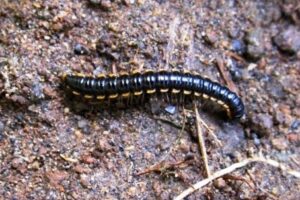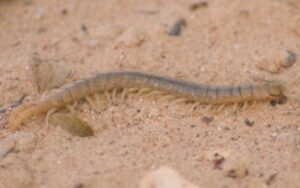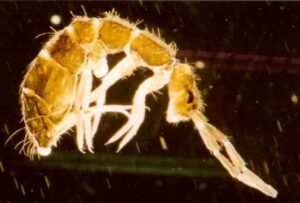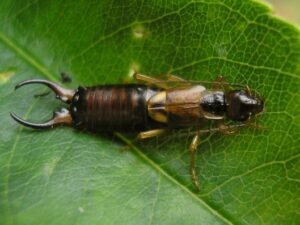Millipedes:
Long-flange Millipede
General Description
| · Long-flange millipede is about 1.4-2.8 cm in length (1.45–2.0.5 cm in males and 1.65–2.75 mm in females) and about 1.5-3.2 cm in width (1.5 to 2.7 cm in males and 1.6–3.2 cm in females)
|
Credit: Kembangraps |
- Millipedes are elongated dark brown to black arthropods that are oval in cross-section and appear to have two pairs of legs attached to most body segments. Actually, each apparent body segment consists of two segments that are fused together and appear as one.
- Millipedes that commonly invade homes are 1.5 to 30 cm long and tend to coil up when resting.
- The young millipedes were light brown in color.
Life Cycle and Common Characteristics
- Millipedes, also commonly known as “thousand-leggers, normally live outdoors in damp places, such as under decaying leaves and in mulch around outdoor plantings.
- They feed on damp and decaying vegetable matter, as well as on new
- roots and green leaves.
- In wooded areas, millipedes live in piles of leaf litter.
- In dry weather, they migrate out of the litter piles as the leaves dry, and they may cross roads and enter buildings in large numbers. This behavior may also occur in lawns or yards where large piles of leaves or compost piles are present.
- They can emit a foul odor when disturbed.
Damages and Economic & Medical Implications
- It is a pest in and around the house and garden. In greenhouses, gardens, and potted plants, millipedes can be annoying but do not feed on the plants unless the plant is already damaged or decayed.
- It is a beneficial arthropod; it feeds on insects, spiders, and other arthropods.
- They can be annoying as accidental invaders in houses and other buildings when they migrate into buildings overnight.
- They are generally not harmful arthropods to humans.
- They do not feed upon building structures or furnishings.
- Smaller individuals are not large enough to penetrate human skin, and their bites are not serious (but an antiseptic should be used on the wound).
- The venom is not medically significant. The bites from several species can cause intense and long-lasting pain and swelling.





